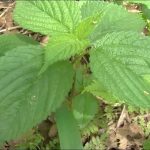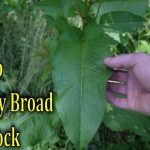Common milkweed is an easy wild edible to identify and is a great addition to any forager’s repertoire. It is commonly found in fields and clearings, and its globular pink to purple colored flowers and broad elliptical leaves make it easy to spot. The leaves have a unique texture, feeling like suede, and the plant produces copious amounts of milky latex when cut. It is sometimes placed in the Asclepias family and other times in the Dogbane family, but regardless of its classification, it is a beneficial plant for both humans and the environment.
The shoots of common milkweed are edible and can be cooked like asparagus. The pods can also be eaten, but they should be harvested when young and tender. The flowers can be eaten raw or cooked, and the leaves can be cooked like spinach. All parts of the plant are edible, but caution should be taken when harvesting as some people may be allergic to the latex produced by the plant.
Common milkweed is an important food source for many native insects responsible for pollination. It is also a great source of nectar for bees, butterflies, and hummingbirds. In addition to providing food for wildlife, this plant has medicinal benefits as well. It has been used to treat a variety of ailments from asthma to skin conditions.
Common milkweed is an easy wild edible to identify and is a great addition to any forager’s repertoire. Its edible parts can be used in many recipes, it provides food and nectar for wildlife, and it has medicinal benefits as well. With its distinctive leaves and flowers, it is one plant any forager should know how to identify.



GIPHY App Key not set. Please check settings